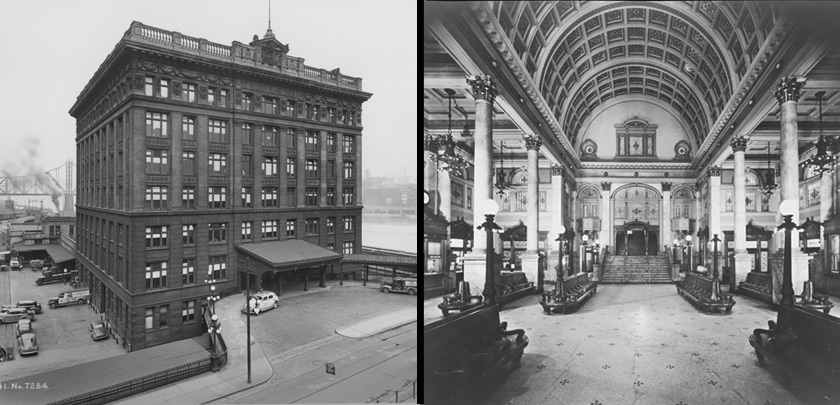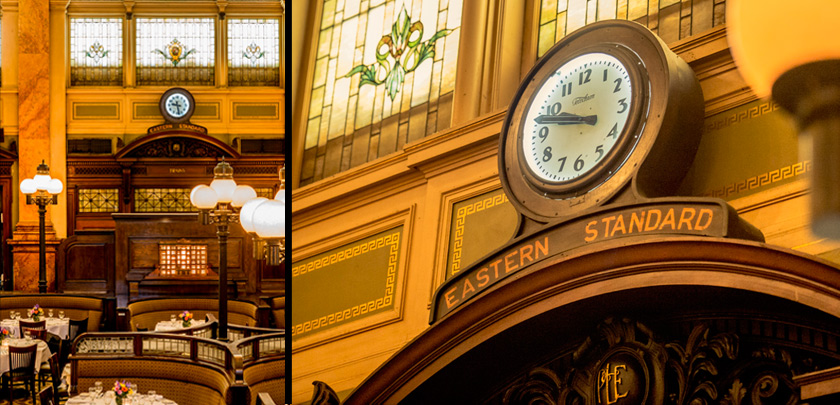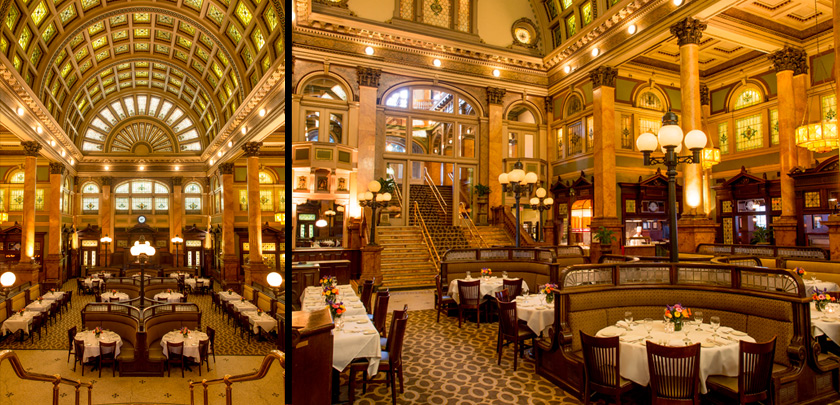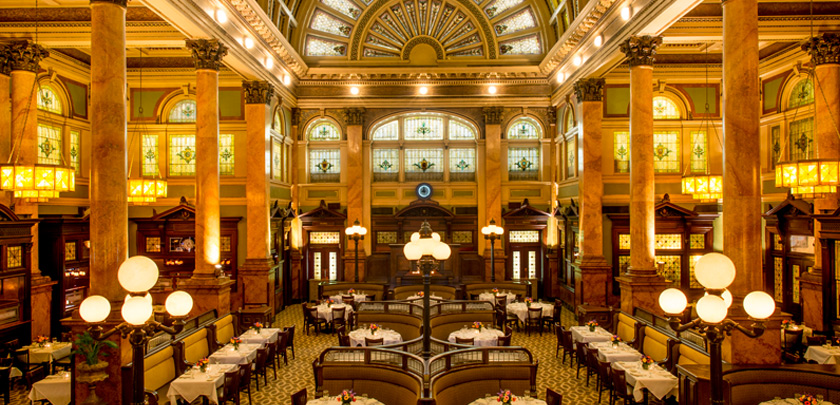You need a grand place to wear grand attire, and there’s nothing grander than the former Pittsburgh and Lake Erie Railroad (P&LE) station.
Pittsburgh has some of the most glorious architecture in the United States. In the heyday of the steel-making industry, the city benefited from the great wealth that steel tycoons funneled into it with the construction of copious monumental buildings. Over the years, however, these buildings gradually fell into disuse and disrepair.
In the 1970s and 1980s, Pittsburgh went through a two-part renaissance. To the city’s credit, many of these buildings were restored to the glory of their earlier days. Prince Charles was so impressed by this architectural restoration that he visited the city in the early 1990s to see for himself how it had been transformed. He used this as inspiration for his own efforts in restoring architecture in England.

One of the beneficiaries of this grand renaissance was the P&LE Railroad station. Chartered in 1873 and opened for commercial use in 1879, the P&LE Railroad connected the southwestern Pennsylvania coal and coke industries to Youngstown, Ohio and the Lake Erie region.
In the Victorian era, Pittsburgh had been a bustling hub of commerce and activity that brought visitors from far and wide. Trains were a principal form of transportation, not only to move goods, but also passengers traveling to and from Pittsburgh.
Located on the corner of Smithfield and Carson Streets on Pittsburgh’s south side, the majestic P&LE Railroad station was the busiest of the three main railroad stations that served Pittsburgh during the golden age of passenger trains. Although the line was very short, this station complex was the headquarters for a company that transported the lion’s share of steel in the United States.
After World War II, the passenger train industry declined and, by 1970, it went the way of the dinosaur. Even the freight business died. The P&LE freight station, terminal, seven-story warehouse, express house and other smaller buildings closed and succumbed to decay.

In 1974, the P&LE Railroad station was listed on the U.S. National Register of Historic Places. In 1976, as part of Pittsburgh’s revitalization efforts, the Pittsburgh History and Landmarks Foundation (PHLF) brought this forty-acre complex back to life as a mixed-use site for public consumption, hosting the Gateway Clipper Fleet, shops, restaurants, a hotel and offices. The project was funded by The Allegheny Foundation, a Scaife family trust, who was the primary developer. The station is now the best preserved of the large train stations that still exist in Pittsburgh.
In 1994, PHLF sold the property to Forest City Enterprise, who expanded it into Pittsburgh’s premier dining and entertainment hub. It has become the city’s most popular tourist attraction.
The center-piece of what is now called Station Square Plaza is Bessemer Court, a tribute to the glory days of Pittsburgh’s steel industry. Here, a state-of-the-art fountain entertains crowds with its Waltzing Waters Liquid Fireworks Show that sends multi-colored jets of water dancing into the air, choreographed to music.
The P&LE Railroad station is the crown jewel of this entertainment complex. Now known as the Landmarks Building, it houses the Grand Concourse Restaurant and is the epitome of Victorian luxury with its turn of the century marble columns, brass and mahogany embellishments, an arched coffered ceiling with stained glass insets, and a magnificent semicircular window on the western end.

There’s a deeply-held mystique that surrounds a historic building such as this. You can sense the layers of years gone by and the lives of people who passed through it long ago. This is a fine example of how historic architecture can serve a contemporary purpose.
When I lived in Pittsburgh, I had the great pleasure of having Sunday brunch here more than once. In my estimation, this was not only the best Sunday brunch in Pittsburgh, but the best Sunday brunch I’ve had anywhere since. Along with live harp music, the splendor of the beautifully-restored Victorian architecture made dining here special.
During that time, I was a board member of the Pittsburgh Film Workers Association. We held our annual Oscar night party at the Grand Concourse Restaurant. It was, indeed, a grand place for a formal affair. The Pittsburgh Film Commissioner and even the Mayor were in attendance as we watched the Oscar broadcast on multiple screens around the room, drank champagne and mingled with our fellow film crew.
I knew these people from the movie set, a place where casual was the norm and no one ever saw me without a baseball cap on. But a place such as this grand station transforms you. We were all different people that night, dressed in our best gowns and tuxes. You do need a grand place for grand attire, and this former Victorian train station was just the ticket.




Comments are closed